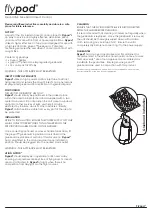
Waveform Setup
R&S
®
Scope Rider RTH
47
User Manual 1326.1578.02 ─ 12
The R&S
RTH captures the input signal and converts it to digital samples. The digital
samples are processed according to the acquisition settings. The result is a waveform
record that is displayed on the screen and stored in memory.
Description of settings
Figure 3-1: Acquire menu of R&S
RTH1002 (without mixed signal option R&S
RTH-B1)
Acquisition Mode
Defines how the waveform is built from the captured samples. There are two general
methods to build the waveform record: sample decimation and waveform arithmetic.
Sample decimation reduces the data stream of the ADC to a stream of waveform
points with lower sample rate and a less precise time resolution. The R&S
RTH uses
decimation, if the waveform "Sampling Rate C1 - C4" is less than the ADC sample
rate. The acquisition modes "Sample", "Peak Detect" and "High Resolution" are deci-
mation methods.
Waveform arithmetic builds the resulting waveform from several consecutive acquisi-
tions of the signal. The acquisition modes "Average" and "Envelope" are arithmetic
methods.
"Sample"
One of n samples in a sample interval is recorded as waveform point,
the other samples are discarded. Usually, most signals are displayed
optimally with this acquisition mode but very short glitches might
remain undiscovered by this method.
"Peak Detect"
The minimum and the maximum of n samples are recorded as wave-
form points, the other samples are discarded. Thus the instrument
can detect fast signal peaks at slow time scale settings that would be
missed with other acquisition modes.
"High Resolu-
tion"
The average of n captured sample points is recorded as one wave-
form point. Averaging reduces the noise, the result is a more precise
waveform with higher vertical resolution.
Acquisition Control
















































